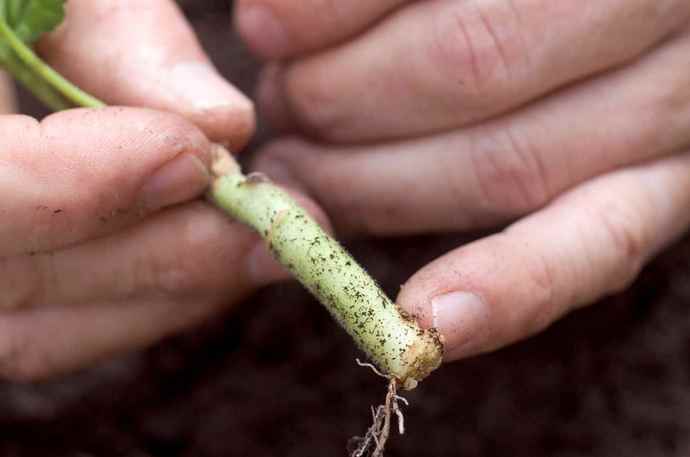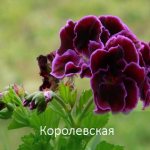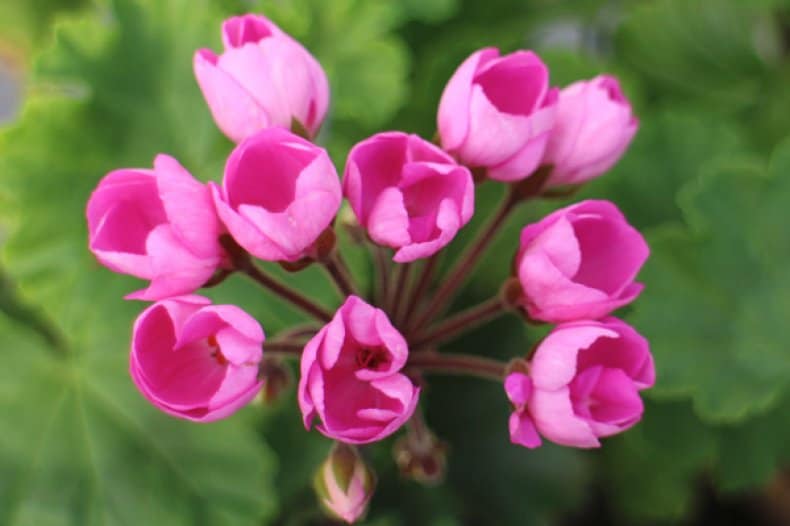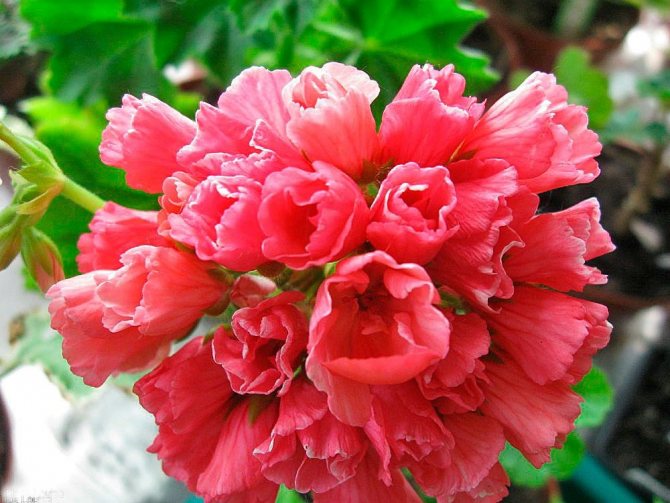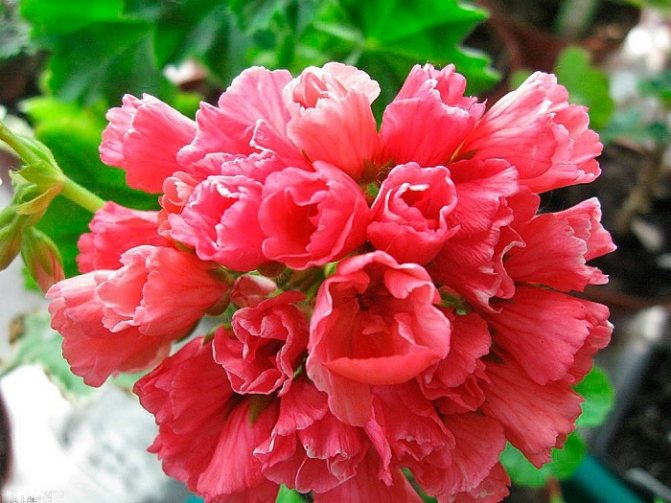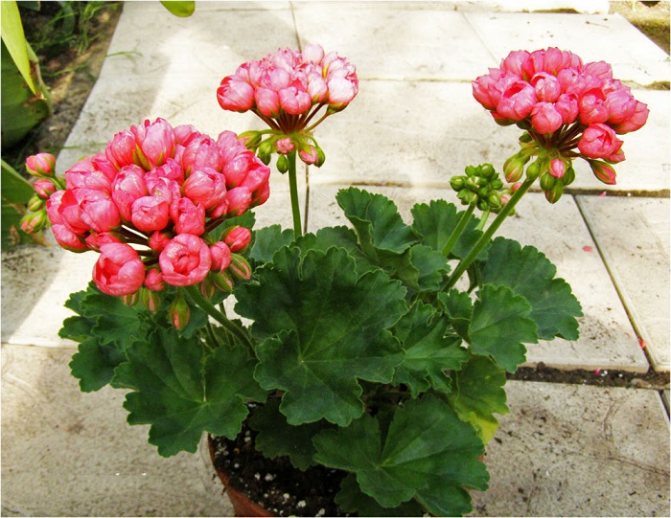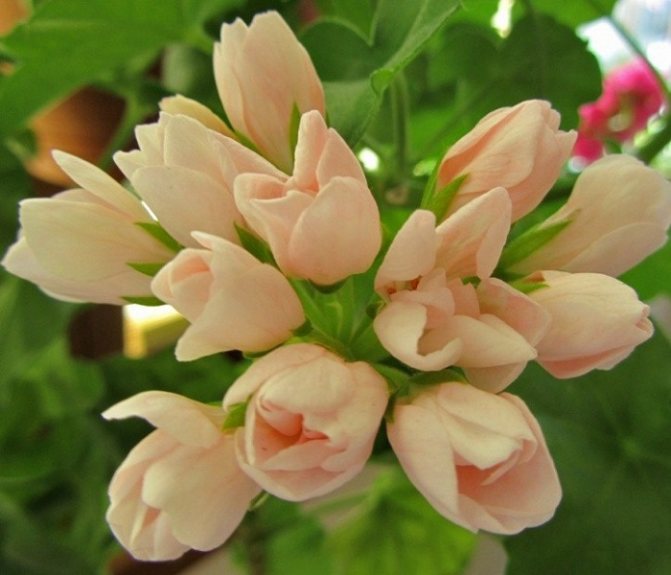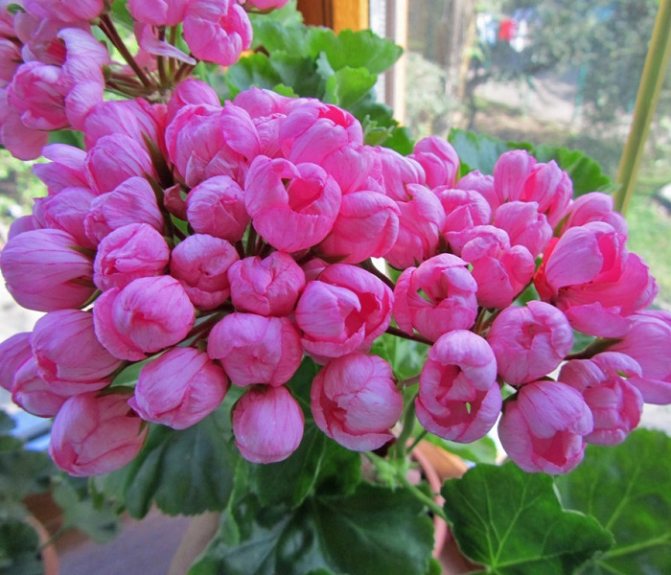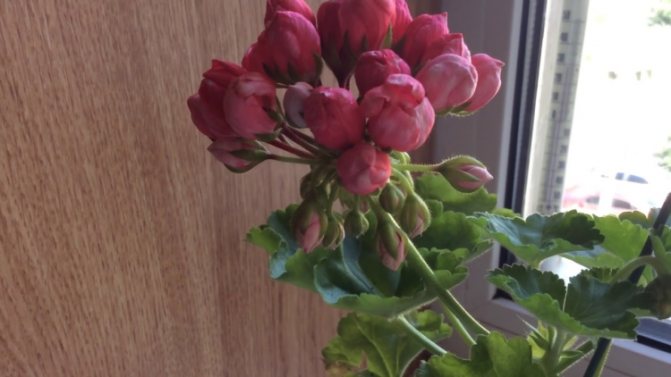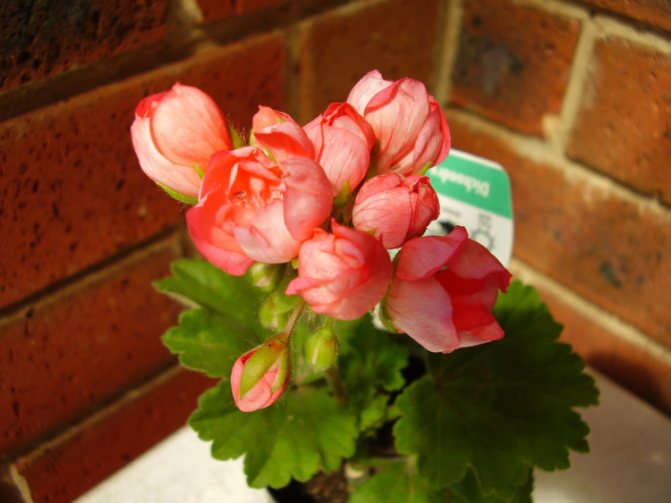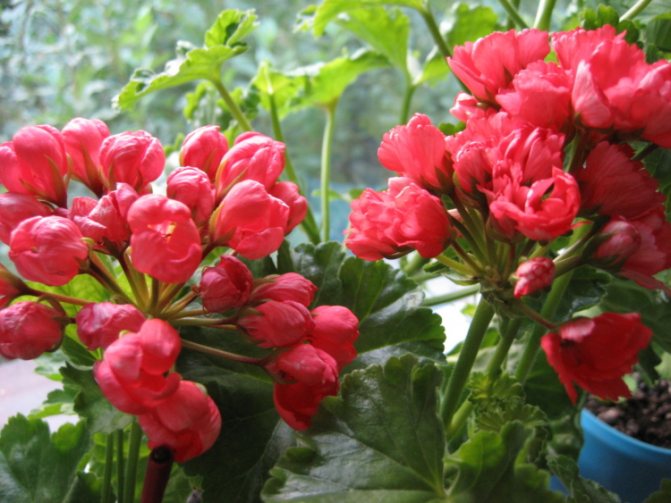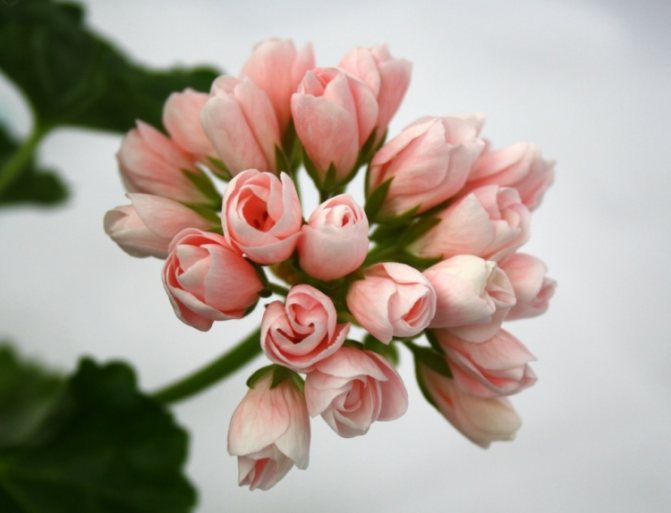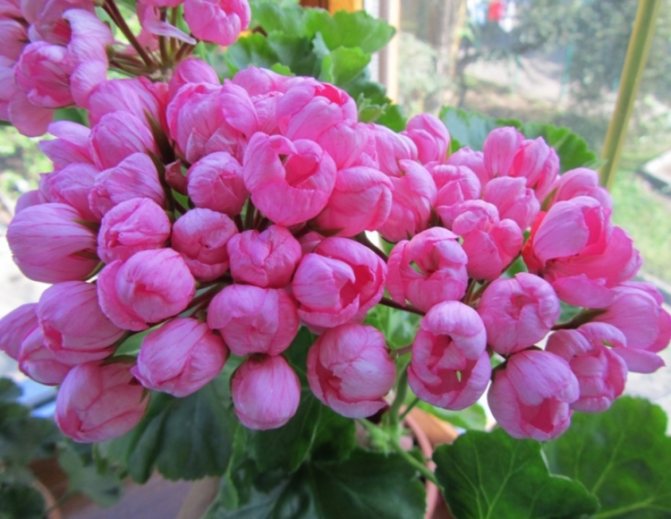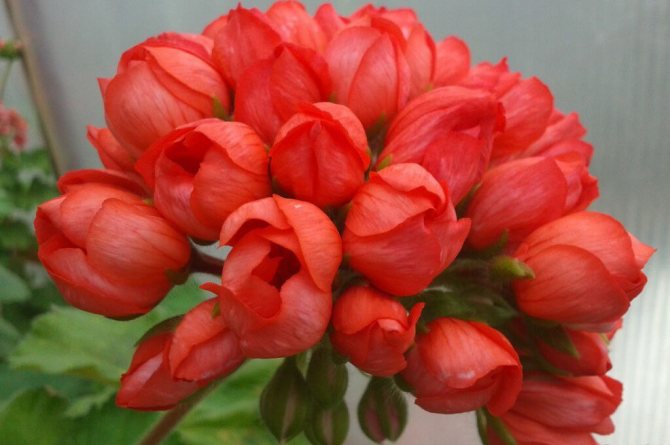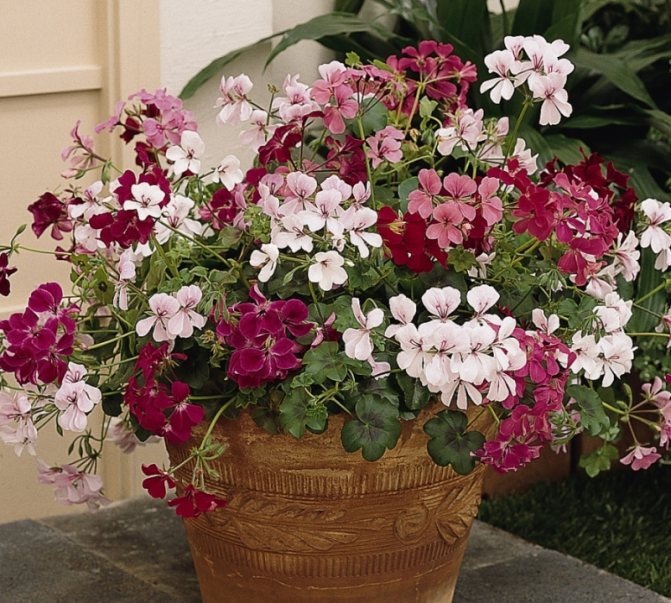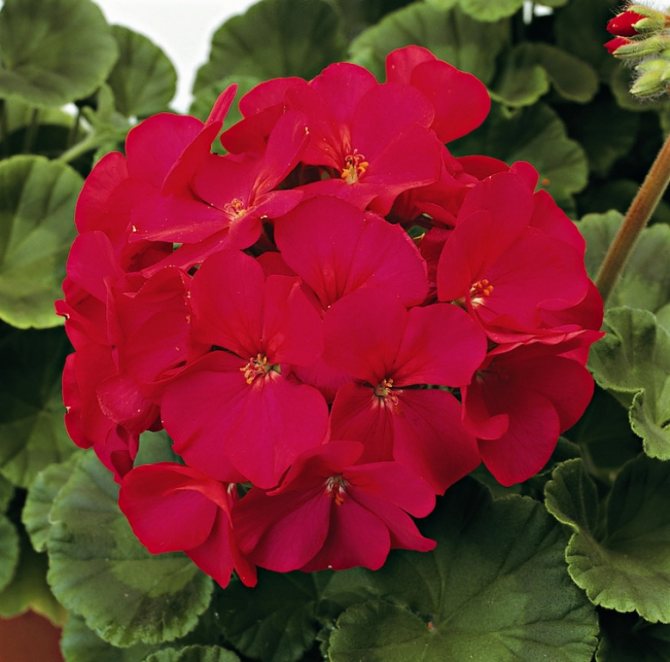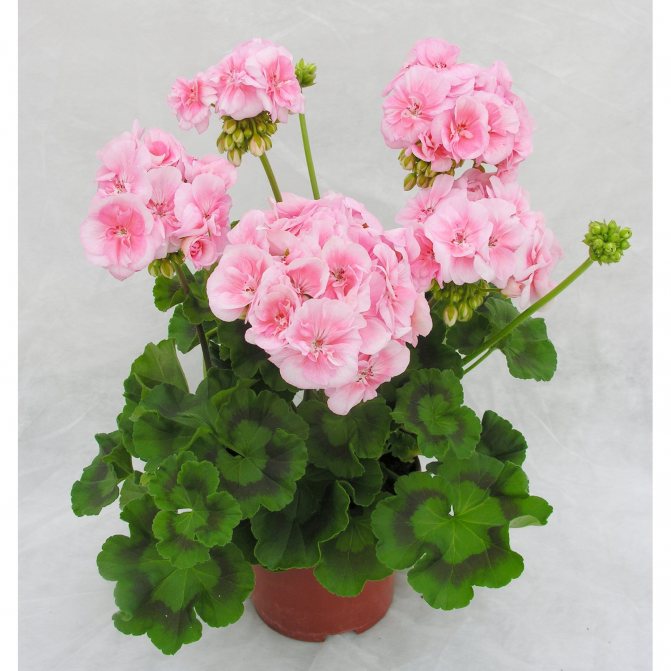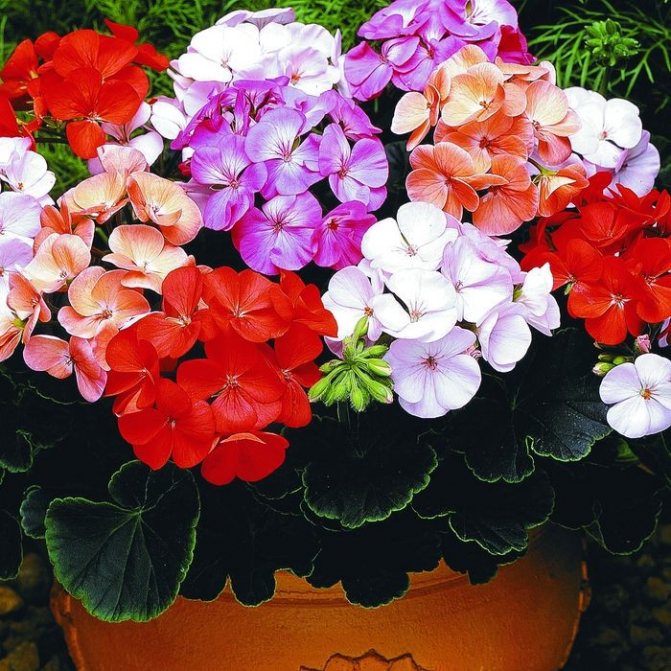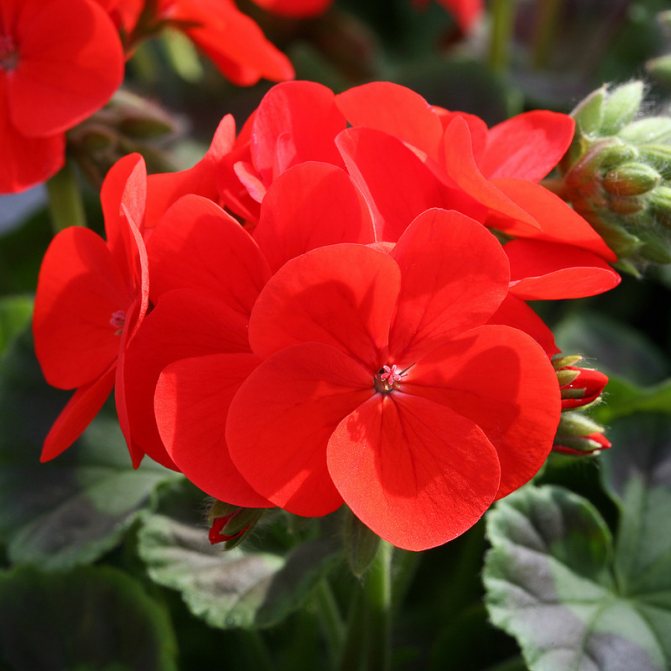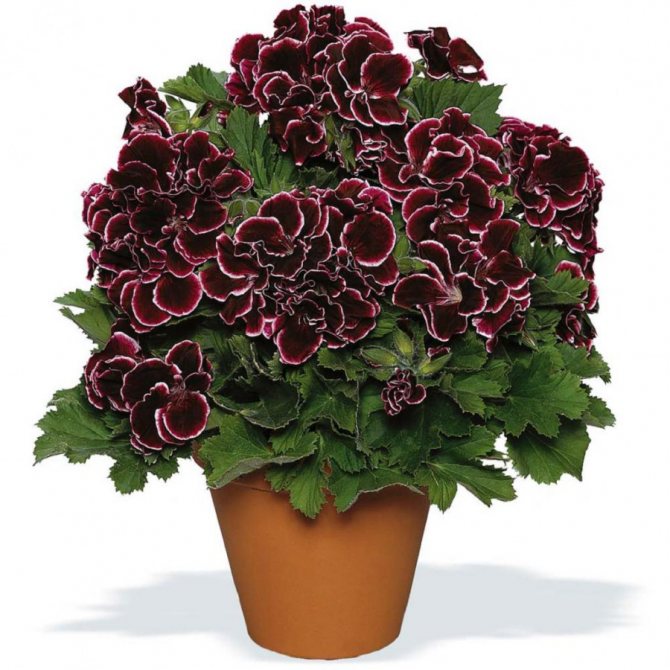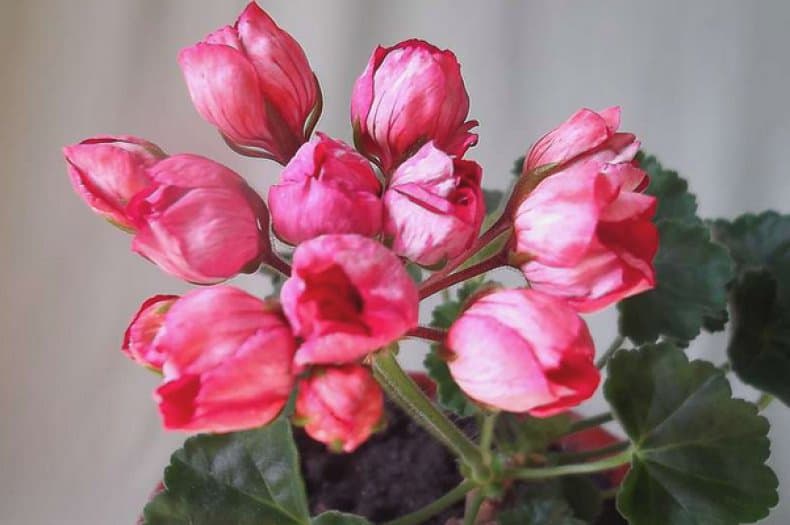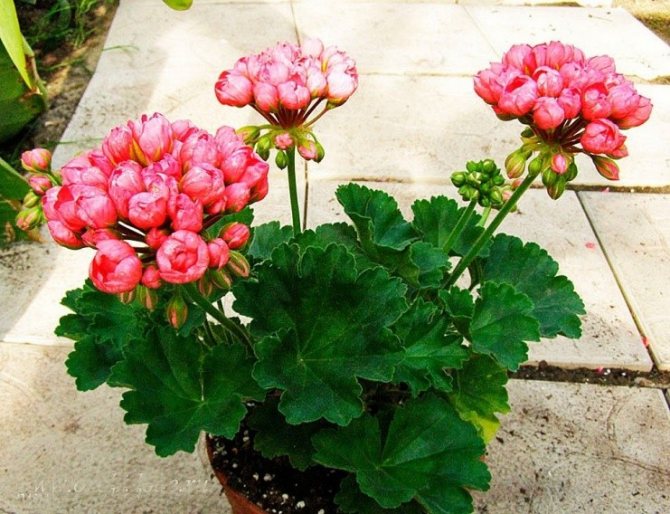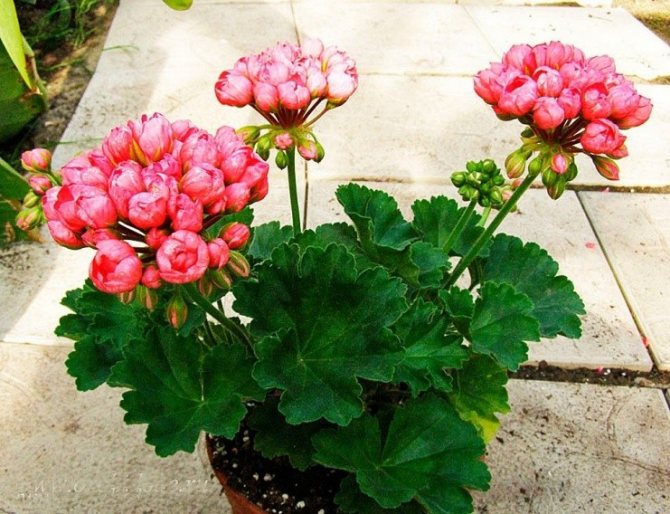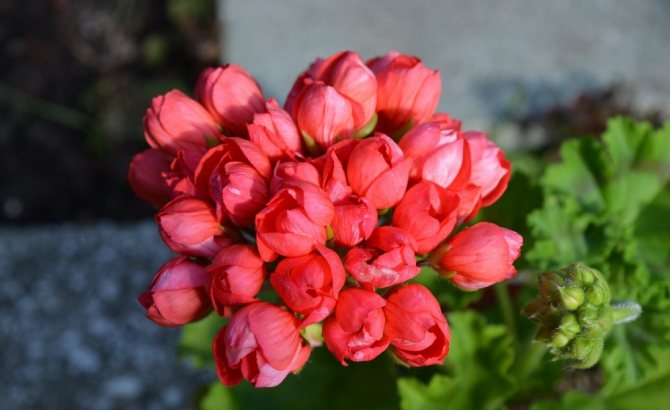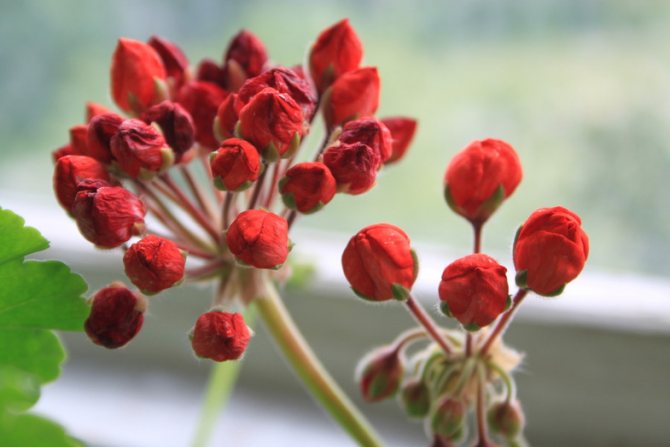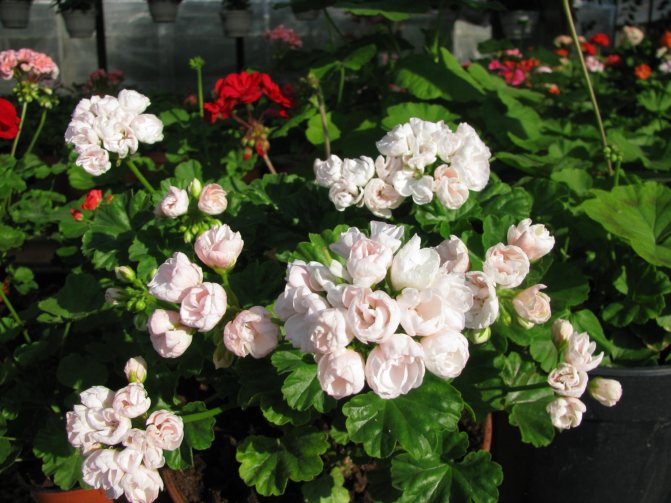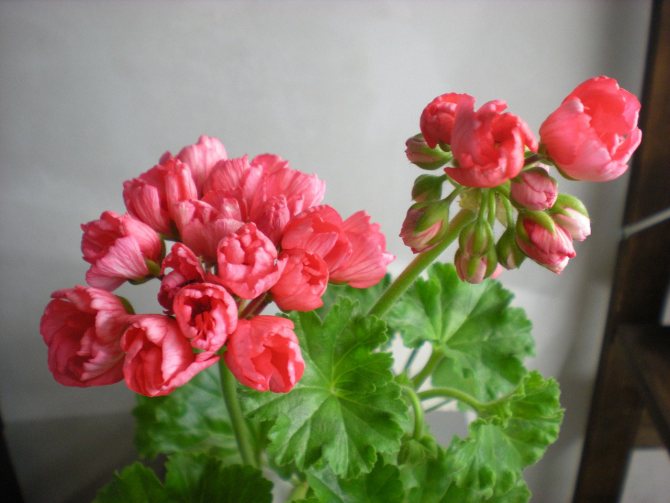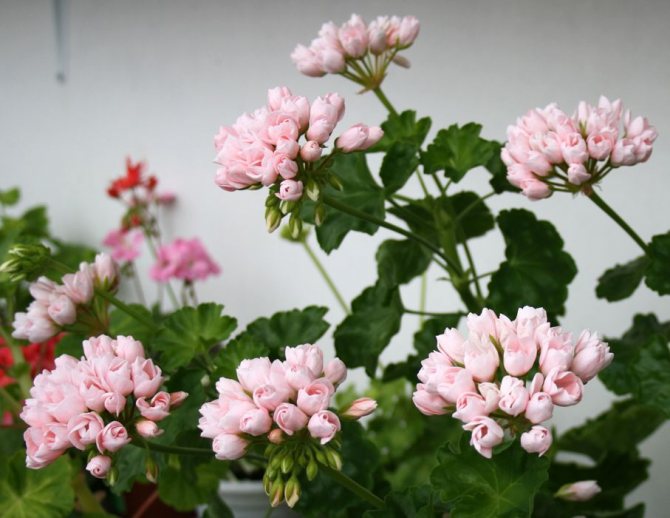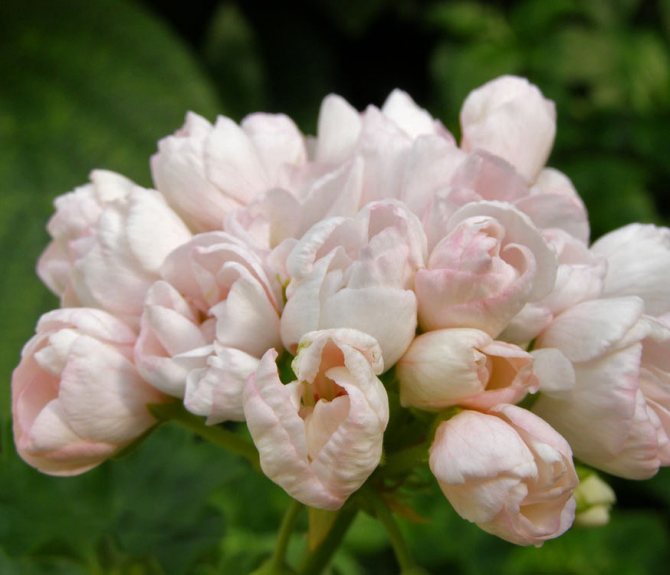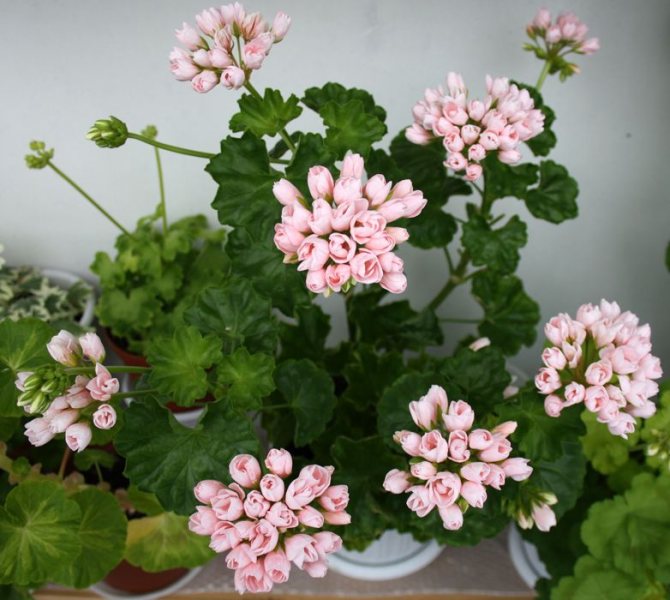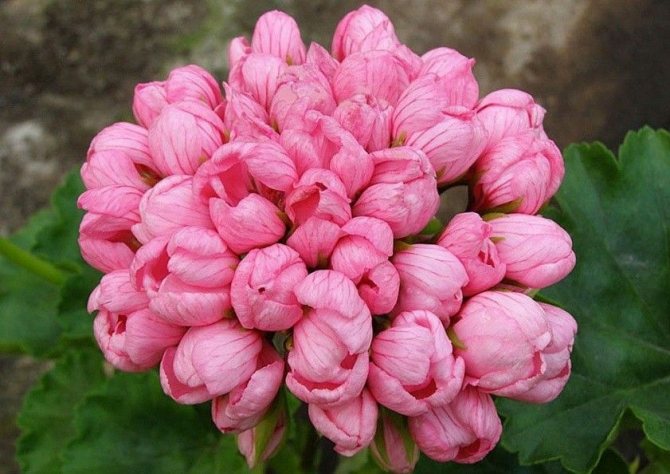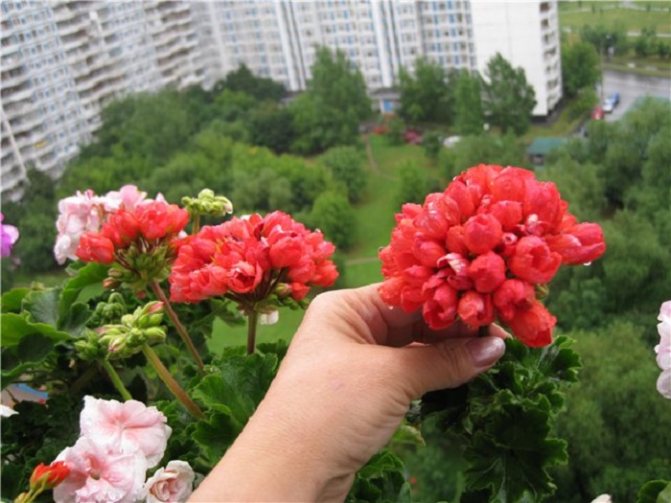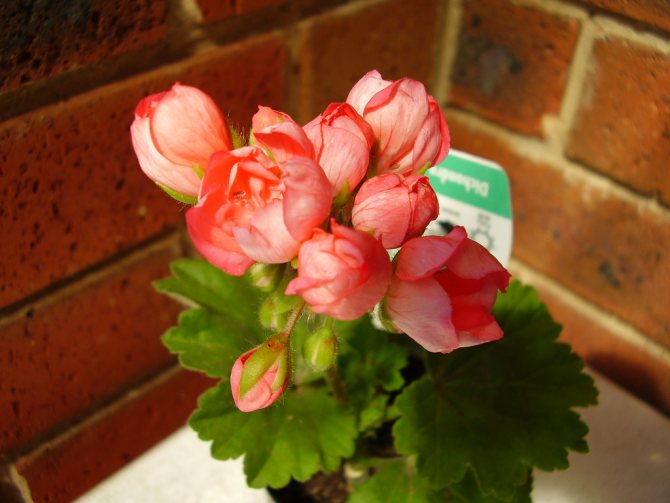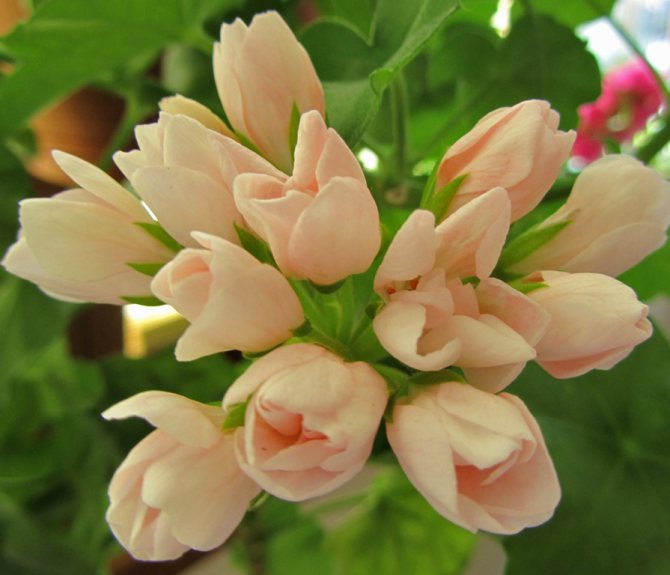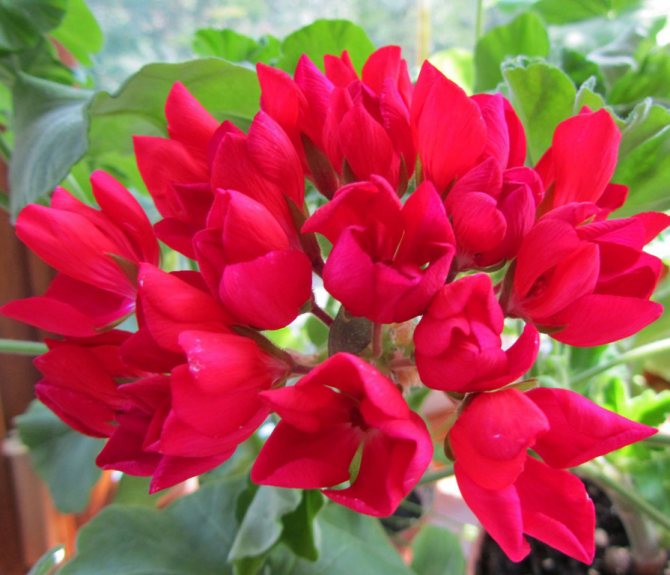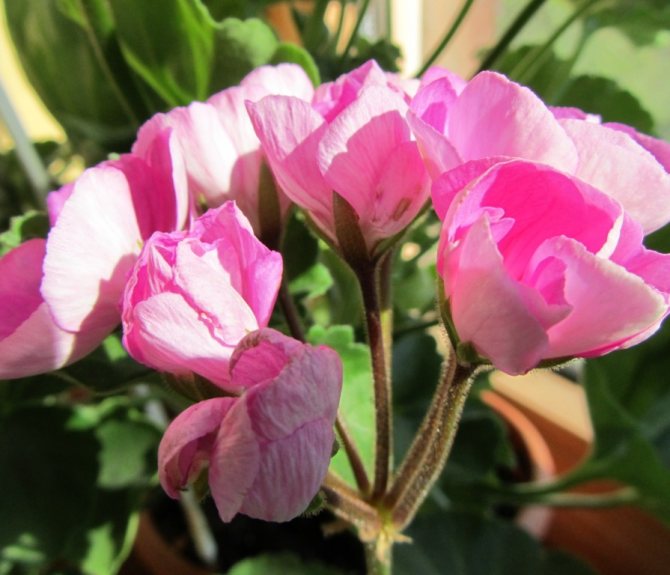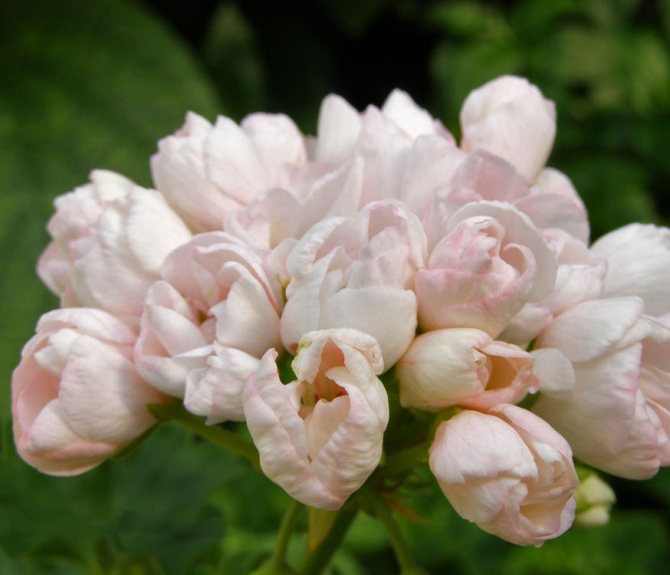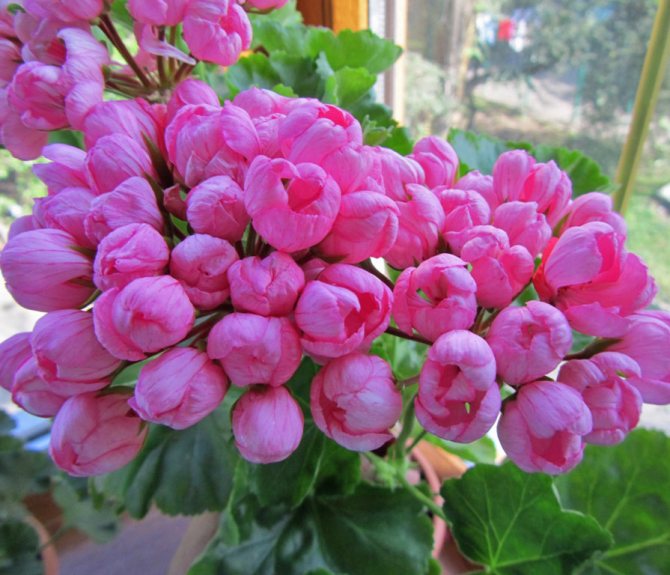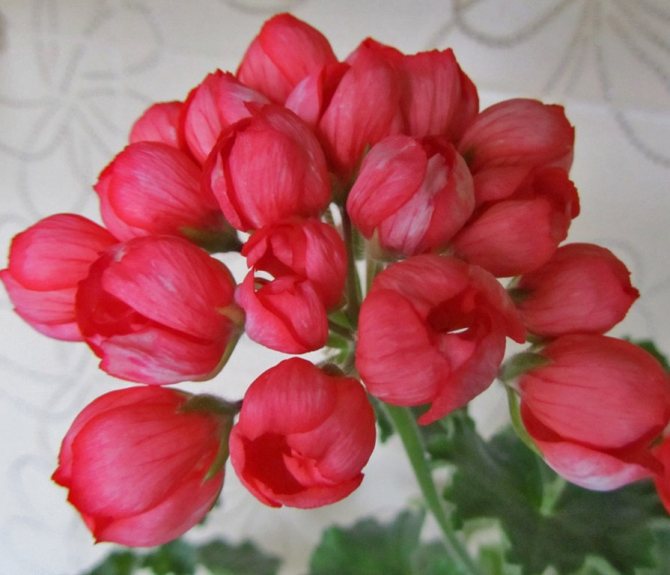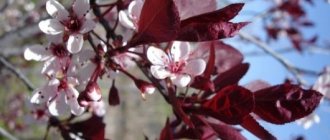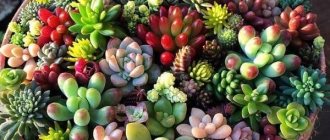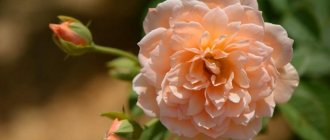Botanical description
Tulip geranium is a perennial herb of the Pelargonium genus of the Geranium family. The stems are straight. Leaves are simple and palmate. They are distinguished by their pronounced brilliance and rigidity.
The fruit is presented in the form of a small box with seeds, which opens from bottom to top. There is one inflorescence on one stem, in which there are 50 semi-double flowers, consisting of 8 petals. They resemble unblown tulips in length no more than 1 centimeter. Their color ranges from pale pink to burgundy.
Types of indoor geranium
Pelargonium is a perennial flower. Belong to the geranium family. Over 4 hundred varieties are ubiquitous. Geranium owes its name to the inhabitants of Greece for the shape of the fruit, similar to the beak of a crane. The Germans call the flower "stork's nose".
Geranium came to European countries from Africa 4 centuries ago. For its peculiar aroma, external decorativeness, the plant has become very popular among aristocrats. Later, the flower adorned the windowsills of people of other classes.
Breeding developments have made it possible to obtain numerous hybrids, excellent in shape, shades of leaves, inflorescences. Pelargonium is divided into types.
Zonal
The most famous. This species received the name for the color of the leaves. It has strictly delimited areas of various shades. The marginal stripe is scarlet, snow-white, blue, burgundy. The central share of all kinds of tones. In color, they meet black, silver, gold. There are specimens with 3-colored foliage.
Its varieties stand out for their lush, vibrant flowering. The plant has a straight stem with pubescent leaves that have a peculiar smell. Pelargoniums of this species are distinguished by the shape of the flowers:
- tulip;
- rosebuts;
- cactus (twisted petals resemble chrysanthemums);
- stellar;
- clove;
- dikons (small flowers are concentrated in bright buds).
The varieties are striking in the variety of petal colors. Zonal pelargonium blooms throughout the summer months. In the winter, some gardeners do not put the plant to sleep. Geranium continues to delight with a magnificent color fragrance.
Royal
Large flowers of double or regular shape. They have grooved petals with permanent dark stripes or spots. The top two are larger, more velvety than the rest. This feature is typical for this species.
The plant reaches a height of 15 cm. The leaves are rough, jagged along the edges, outwardly similar to maple leaves. They are solid or bright. This hybrid is the most demanding home care. The flowering period is 120 days. It comes after 2 years of growth.
Fragrant
She gained recognition from gardeners for its varied aroma. Lightly touching a geranium leaf of this variety, you feel a strawberry, ginger, vanilla, citrus, mint smell. There are hybrids with the aroma of apple, lilac, pine needles, almonds.
The flowers of this houseplant are small and varied in shape. Terry foliage is added to tea, desserts. Fragrant sugar is made from aromatic geranium. The process is not difficult. Leaves with sugar are placed in a container in layers.

Withstand in the sun for 2 weeks.After removing the plant residues, the aromatic sugar is added to the culinary dishes.
Ivy
Ampel view. Fragile shoots reach a length of 1 m. Shiny light green leaves, similar to an asterisk, resemble ivy.
An excellent option for landscaping balconies. Several varieties are placed in hanging pots.
Ivy-leaved pelargonium pleases with simple or double flowers from June to September. The buds attract with their shades: from snow-white to bluish-black.
Hybrid pelargonium groups
There are geraniums obtained by crossing different types of flowers. They are displayed in separate groups. This is an amalgamation of hybrids of curly (a kind of fragrant) and royal pelargonium.
Angel
Violate buds are outwardly similar to Pansies. It grows up to 35 cm. If geranium is subjected to constant pruning, it takes on an elegant shape. Lush flowers are fragrant on the branches during the summer months.
Pelargonium Unicum
The cut leaves have an airy, spicy scent. Multiple small flowers are provided with dark spots, veins. Their design resembles a firebird's feather. Unicums are mostly tall plants unless pruned. A great option for outdoor cultivation in summer.
Succulent pelargonium
A very original species native to southern Africa. The intricate forms of the plant resemble all kinds of fantastic objects. The stems, stiff from below, are curved in an unusual way. Dry air, little watering leads to leaf fall.
The place for succulent pelargonium is allocated to the sunniest: this way they retain the bizarre shape. With a lack of light, pets grow quickly, losing their original originality. During the dormant season, a slightly shaded place is acceptable for pots. The temperature in the apartment does not exceed +15 ° С.
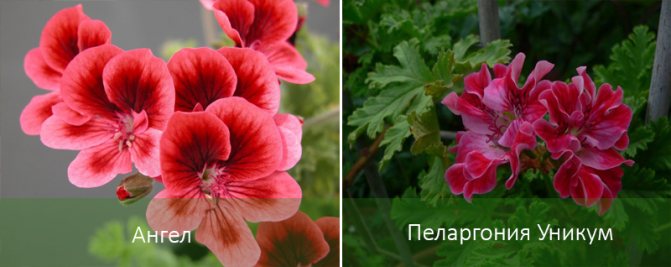

The branches of the plant are sometimes covered with thorns. Succulent geraniums are chosen for exotic indoor decor. They create original compositions for them - bonsai, miniature rock garden, rockery.
Lemon Pelargonium
Leaves of a complex configuration brought wide popularity to this species: strongly dissected, pubescent. The bush reaches a height of 1.5 m. When touched, the foliage exudes a sparkling scent of yellow citrus.
It does not bloom often. The charm of a plant in graceful greenery, delicate fragrance. With sufficient care, it gives light green or white sparsely located flowers.
Exotic geranium is used as a natural freshener, a folk healer. She fills the room with a citrus scent. Lemon pelargonium leaves relieve the symptoms of otitis media, flu, eliminate headaches.
Photo
Introducing a photo of a geranium that looks like tulips.
Breeding history
For the first time this species was bred in 1966 in the American city of Boston in the Andrea family nursery. The first variety was named Patricia Andrea. Shortly after this event, breeders bred several more varieties of the plant, which were named after the relatives of the creators.
Tulip geranium was brought to Europe after about 20 years. There it served as the basis for scientific debate, in which it was discussed that this species was not bred artificially, as claimed, but through natural processes.
Sometimes you can hear how this species is called "peony geranium", but this is the wrong name. It is not officially recorded in the international plant classification.
Rules for choosing purchased seeds
Why do the leaves of room geranium turn white and how to help the plant
High-quality seed is sold packed in bags made of thick, sturdy paper. The following information must be indicated on the package: name of the manufacturer, contact details, batch number.
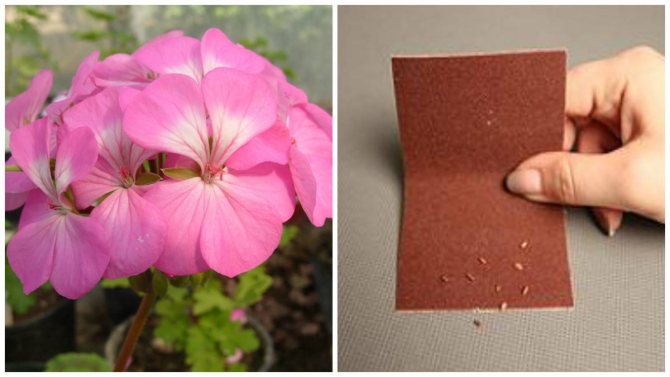

After the geranium blooms, seeds are formed that can be used for propagation
In addition, a bona fide producer indicates the name of the crop and variety, the mass of seeds, and their shelf life. After opening the package, the florist must inspect the seed. You need to plant only dry seeds without signs of disease and pests.
Important! You need to purchase planting material from trusted manufacturers.
Before ordering seeds from China through the online store, which is now very common among flower growers, you need to carefully read the customer reviews.
Popular varieties
Conny
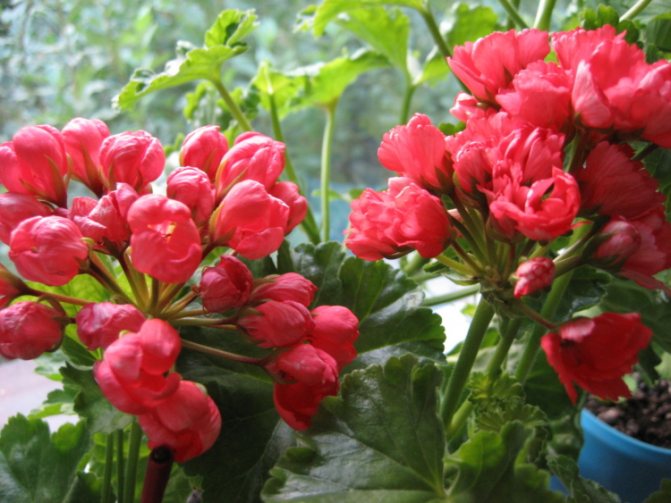

A dwarf variety with bright red inflorescences and carved foliage.
Tmma fran bengtsbo
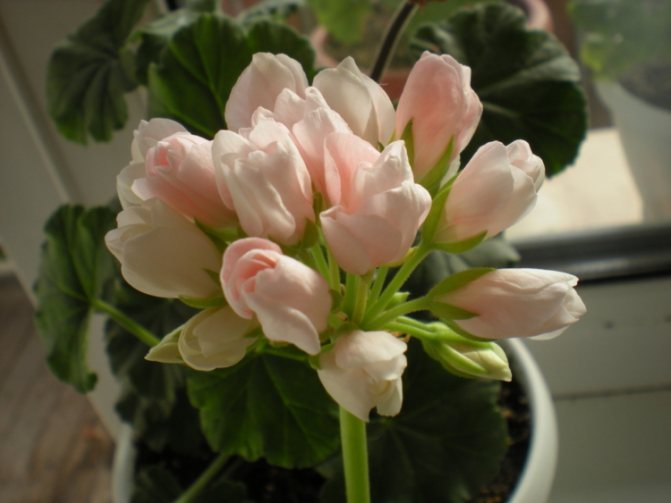

Tall variety (about 1 meter) with pinkish-white flowers.
Learn about the tulip geranium Tmma fran Bengtsbo from the video:
Patricia andrea
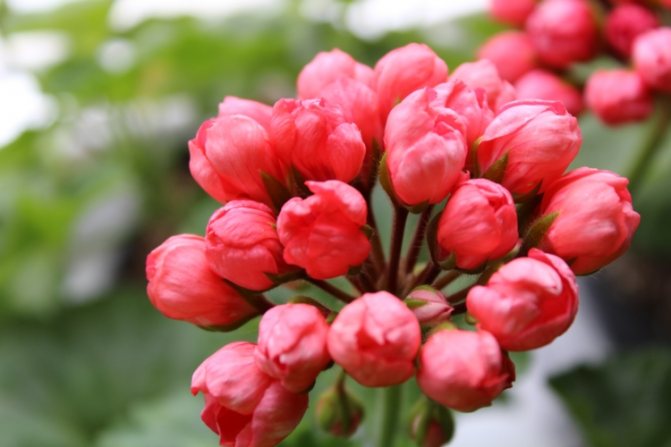

Low grade with red-pink flowers, which are shaped like a tulip.
We recommend watching the video about the tulip geranium Patricia Andrea:
Red pandora
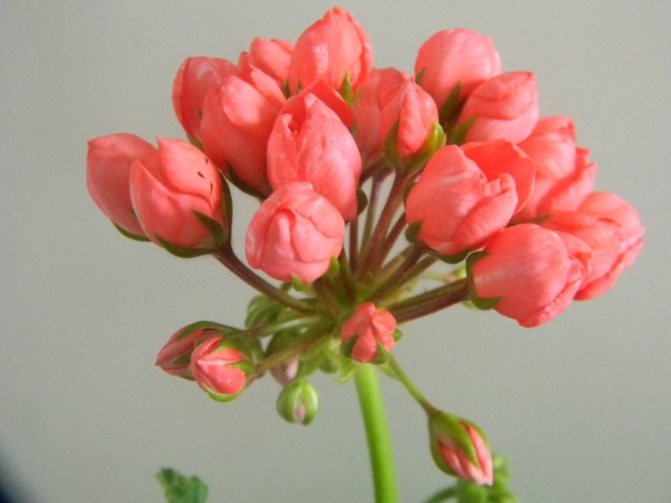

Medium variety with bright pink lush flowers and emerald-colored leaves.
From the video you will learn about the cultivation of Red Pandora pelargonium:
Features of flowering plants
Geranium at home - where is it better to put in an apartment, in a flower pot or on a windowsill,
If the rules of care are not followed, the inflorescences change their shape and turn into ordinary geranium flowers. To preserve the specificity of the variety, you need to adhere to the following rules:
- Timely pinching of the shoots will help maintain the bushiness of the pelargonium.
- Careful and constant control of the plant should include removing dried or wilted flowers.
- When several ordinary flowers appear, they must be cut off.
- Airing the room and drafts can destroy the plant.
A period of activity and rest
At the time of active growth, geraniums must be fed with potash and phosphorus fertilizers.
In winter, the tulip geranium begins a dormant period. At this time, the flower must be moved to a cool place. The most acceptable temperature is + 10 ... +12 degrees.
Types and shape of flowers
Geranium flowers are painted in a wide variety of colors and are mainly collected in large inflorescences. Each flower of the plant is endowed with several petals, the edges of which can be jagged or remain smooth. The inflorescences consist of 20-30 flowers. The name of the species is due to its external resemblance to tulips. Of all the varieties of tulip geraniums, the most unusual stands out, the flowers of which are more like small roses. Because of this, it is called Pelargonium rosebud Emma.
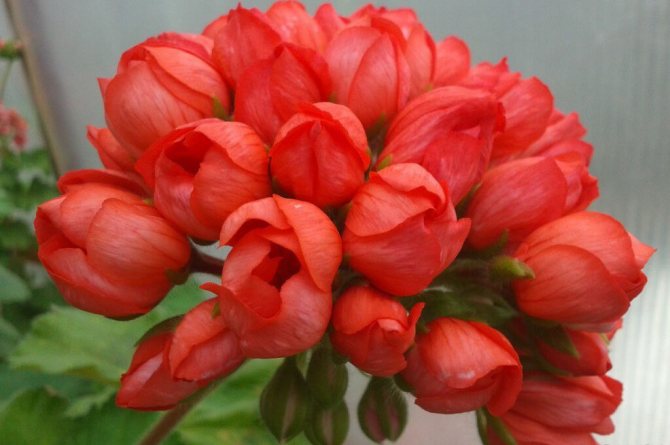

Tulip Geranium Flowers
Where and how to grow at home?
Tulip geranium is an unpretentious plant, but it still requires special care.
Location and lighting
This plant cannot live without light, but direct sunlight is also destructive for it, as it leaves severe burns on the leaves. It is better to place it on the southern windowsills.
Adequate lighting must be maintained in winter. Phytolamps can be used for these purposes.
It is preferable to keep geraniums as far as possible from batteries, air conditioners and drafts.
Temperature regime
In the summer it is advised to maintain a temperature of 20-26 degrees Celsius. In winter - 13-16 degrees. The flower does not tolerate sudden changes and contrasts in temperature.
Watering
In warmer months, geraniums should be watered up to 4 times a week, and in cold months, once is enough. It is necessary to make a special tray so that excess water is collected in it. Excess moisture causes the root system to start rotting.
Water for irrigation should be at room temperature. It can be boiled or defended in advance.
The soil
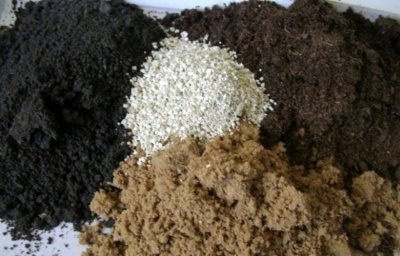

The soil is best placed in a wooden or clay pot. You can buy the earthen mixture itself at a flower shop or make it yourself, which is not so difficult.
- Mix equal amounts of garden soil and peat.
- Add coarse sand.
- You can also add humus and sod.
It is necessary to transplant the plant every 3 years, when the root system of the flower begins to appear on the surface.
Fertilizer
You need to feed geraniums with liquid fertilizer with phosphorus and potassium. It will be enough to do this once a month, since the flower does not like an excess of minerals.
Nitrogen fertilizer is applied to the soil only in the spring and summer.
Pruning
It is recommended to prune the flower in spring
- It is necessary to leave 5 buds on each stem, and remove the old shoots.
- The cut should be treated with charcoal.
Care features
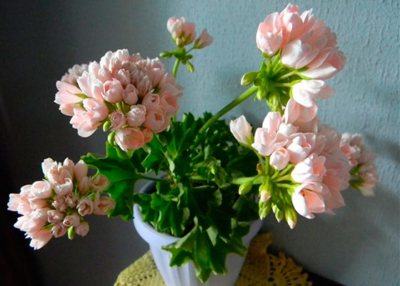

If you do not take responsibility for caring for tulip geraniums, then it can return to its original variety - ordinary geranium:
- pinch new shoots while maintaining the bushy shape of the flower;
- remove dried and withered flowers;
- after full disclosure of the flower, as soon as it loses its appearance as tulips, do not regret it and cut it off;
- Be mindful of humidity, temperature and other environmental conditions.
Flower reproduction methods
There are two methods of propagation of tulip geraniums: cuttings and seeds. To select a specific method, you should study the description of the breeding process.
Seed propagation
For propagation of geraniums by seeds, winter is best suited. Sowing of seed is carried out superficially. Greenhouse conditions are a prerequisite for the survival of a flower. When the first leaves appear, a pick is required. Only after 50-60 days, young plants can be transplanted into pots.
Propagation by cuttings
Apical propagation cuttings can only be used in the summer. Cutting is carried out along the knot. For rooting, at least 3 leaves must remain on the sprout.
The seedlings are lowered into the water until the root system is formed. When the cuttings have roots, they must be transplanted into a pot. For pelargonium, you need to use nutrient soil. After planting, the plant is placed on the sunniest windowsill.
Advice! Inflorescences on cuttings must be removed before planting.
Diseases and pests
Unfortunately, like most plants, tulip geraniums can be attacked by parasites or just get sick.
- Whitefly. Leaves fall off and turn yellow. To get rid of the pest, you must use insecticides.
- Putin tick. The leaves dry up, white dots appear on them, and sometimes you can see the insects themselves. During treatment, the leaves of the plant are treated with alcohol.
- Mealybug. Sugar discharge and white bloom appear on the plant. To get rid of the plant, simply wipe it with soapy water.
- Rust. White round spots appear on the leaves. Unfortunately, for treatment, it is necessary to remove the damaged parts of the flower, and treat the rest with fungicides.
- Gray rot. A gray bloom appears on the leaves. This can only be dealt with by removing diseased areas.
- Blackleg. The stems of the flower turn black, and the leaves turn yellow and fall off. The flower cannot be saved from this disease.
It is necessary to start treatment immediately, because the disease is spreading through a small plant at lightning speed.
Growing pelargonium Herma, Marbasca, Patricia Andrea from seeds
It is quite difficult to grow pelargonium from seeds. However, even novice growers can get healthy geranium seedlings from seeds if they follow certain rules exactly.
Basic rules for growing pelargonium from seeds:
- the seeds must first be rubbed with an emery stone, or with the edge of a knife, run along their surface;
- before planting, the seed is treated with epinin or another similar drug, then hold it for 1/3 hour in a weak solution of potassium permanganate, rinse and only then soak in warm water for 180 minutes;
- the containers in which the seeds will be planted are filled with a special mixture consisting of 2 parts of turf and 1 part of sand and peat. It is this mixture that is best suited for growing geranium seedlings;
- the seeds are placed in the ground at a distance of about 5 cm from each other, sprinkled with the rest of the mixture on top and covered with polyethylene containers to create a greenhouse effect inside. The soil is regularly sprayed (it is best to use a spray gun for this), You need to make sure that the earth does not dry out;
- with the correct temperature and humidity conditions, the first shoots will appear in 12 - 14 days;
- it is possible to transplant grown seedlings if at least 2 permanent leaves have appeared on it. You should not wait for the sprouts to grow very much, since in this case the root system of the seedlings will grow strongly and intertwine. In this case, when transplanting, the roots will be severely injured, and the plants will be very sore.
However, it is much easier to plant tulip pelargonium, like other types of geraniums, with cuttings. Usually, in the last days of August, cuttings from the top of these plants are cut off and placed in water at room temperature. These seedlings give roots quickly. Seedlings with roots are planted in a wet mixture, which is the same in composition as for adult flowers. Planted cuttings should be placed in a sunny, bright place.
